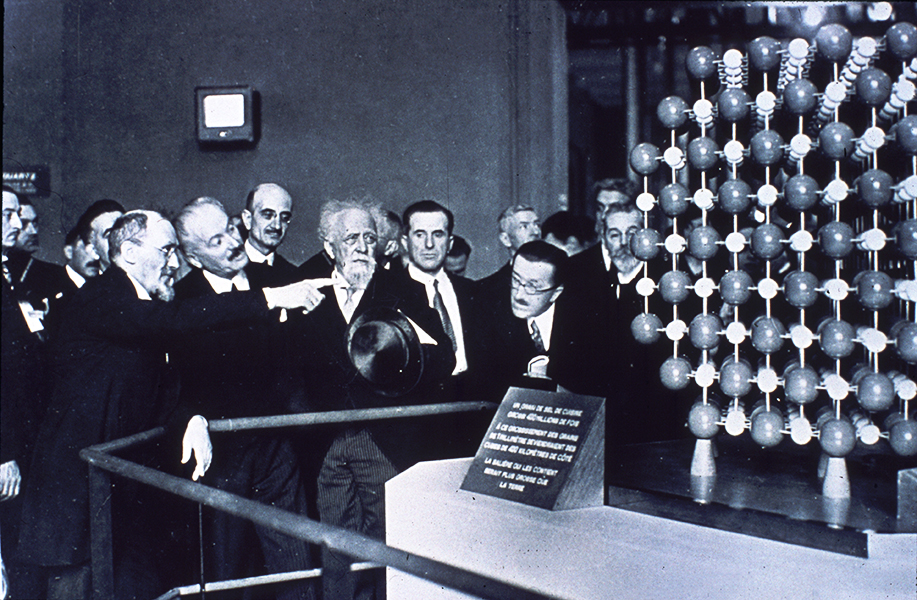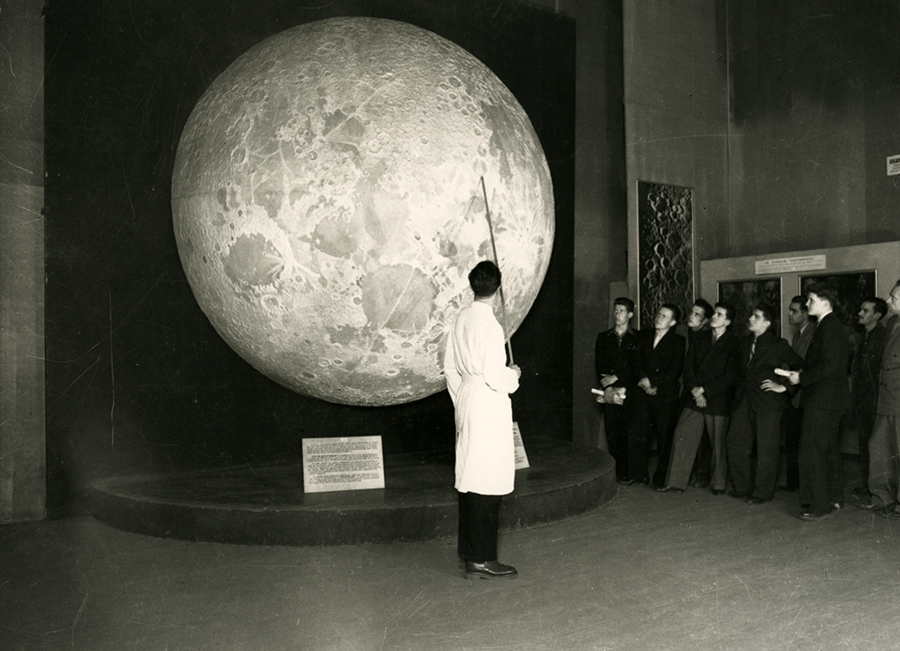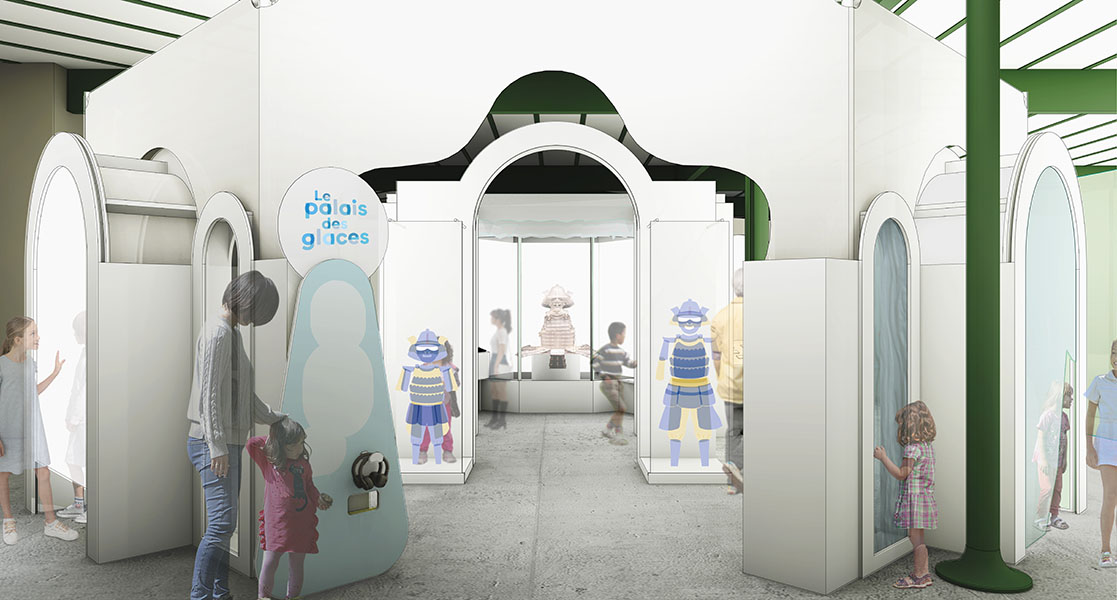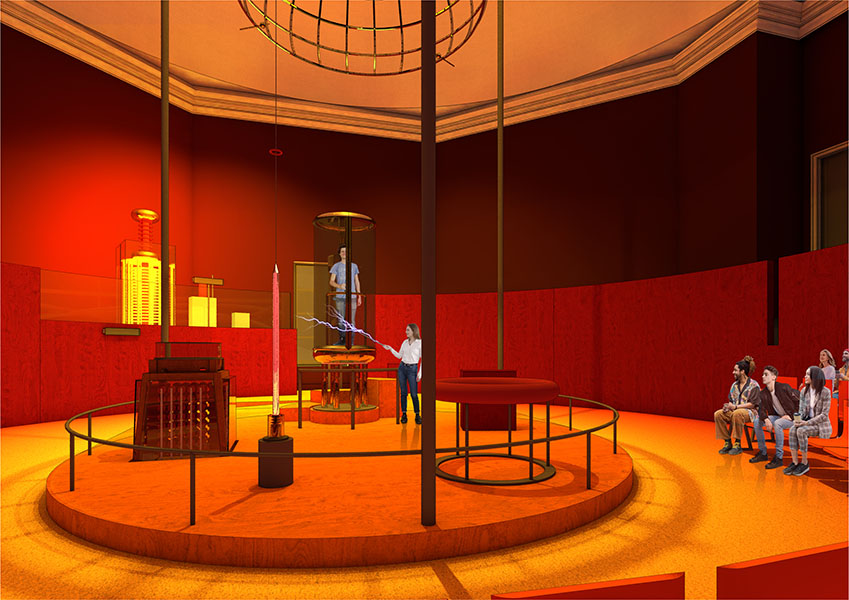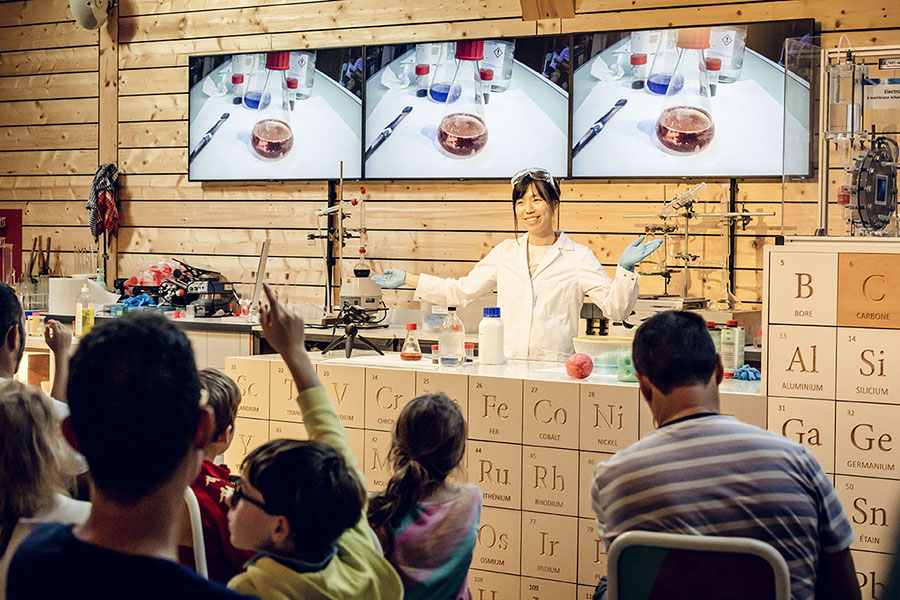Science is back at the Palais de la Découverte
On June 11th, the Palais de la Découverte will be reopening after five years of renovation work. The museum's new programme was developed with support from the CNRS, the project's leading scientific partner.
"It's a living institution with a unique place in our country's history from cultural, scientific and political standpoints.'' The president of Universcience1 Bruno Maquart's evocation of the Palais de la Découverte underlines the importance of this emblematic museum as its renovation work draws to an end.
This museum located in Paris near the Champs-Élysées was the first major French institution devoted to what we now call the dissemination of scientific culture. It was designed for the 'International Exhibition of Arts and Techniques Applied to Modern Life' in 1937 to promote science as a lever for the progress for French society and, more broadly, for international intellectual cooperation and for peace. It was in fact created at the same time as the CNRS with support from the era's intellectual and scientific spheres, particularly the Nobel Prize-winner and physicist Jean Perrin. Over 2,250,000 people visited it in the six months after it opened and the French press were glowingly supportive. "The Palais de la Découverte was one of the highlights of the 1937 Exhibition, if not THE highlight,’ confirms the historian of science, Charlotte Bigg.
Complementary positioning
This success has proved consistent over time, with the museum welcoming over 500,000 visitors a year and an overall total of more than 36 million visitors until its closure for renovation in 2020. The Palais de la Découverte is still one of the jewels in the crown of the Parisian landscape which has a rich and wide variety of establishments disseminating and promoting science. These institutions have complementary and interwoven standpoints and objectives that. For example, the Musée des Arts et Métiers uses a historical and heritage approach to present technology to visitors, the French National Natural History Museum showcases the natural sciences and the Cité des Sciences et de l'Industrie (another of Universcience's components) spotlights contemporary science and technology in relation to major societal challenges. The Palais de la Découverte, however, takes basic research as its central theme. A visitor to this showcase setting is given a coherent overview linking established knowledge with the most contemporary developments.
Beyond its chosen subject area, the museum also stands out because of its unique approach. It "invented the modern science museum," recounts Bruno Maquart, at least in France. The Palais offers visitors live immersive scientific demonstrations which represent a break with the dominant model for museums in 1937 involving collections of objects or specimens. Museum mediators are there to assist the public in "experimenting tangibly" with scientific issues and developing their own curiosity, stimulating their critical thinking and testing their capacity for judgement.
A living museum
"The format of reactive human mediators who listen to the public and are in direct contact with contemporary research is irreplaceable if we want to demonstrate the importance of using the scientific approach in response to the contemporary world's major challenges", explains Matteo Merzagora, Universcience's director of scientific mediation and education.
This "revolutionary" choice is now a hallmark of the Palais. "Above all, people go there for the demonstrations and talks," explains the physicist Jean-Michel Courty who was awarded the CNRS's 2021 science mediation medal. And he knows what he is talking about as he is one of the many French scientists inspired by the Palais for their choice of career. "When I was a teenager, I spent long days listening to and re-reading lectures and trying to understand the experiments on display."
Today, Jean-Michel is one of the nine scientific curators the CNRS has appointed to support the renovation of the Palais de la Découverte, as the organisation is the whole project's scientific reference partner.
Expertise and an overall vision
The CNRS has appointed nine scientific curators to support Universcience's team in developing the new Palais de la Découverte's museographic programme:
- for astronomy, Karim Benabed, academic at the Sorbonne University's Paris Institute of Astrophysics (CNRS/Sorbonne University),
- for the humanities and social sciences (HSS), Charlotte Bigg, CNRS researcher at the Centre Alexandre-Koyré (CNRS/EHESS/MNHN),
- for physics, Jean-Michel Courty, professor at Sorbonne University's Kastler Brossel Laboratory (CNRS/Collège De France/ENS - PSL/Sorbonne University),
- for mathematics, Clotilde Fermanian, professor at the University of Angers' Laboratoire Angevin de Recherche en Mathématiques (CNRS/University of Angers),
- for geosciences, Jérôme Gaillardet, professor at the Institut de Physique du Globe de Paris joint research unit (CNRS/Institut de physique du globe de Paris/Université Paris Cité),
- for computer and digital sciences, Christian Jutten, professor emeritus at Grenoble Alpes University's Laboratoire Grenoble Images Parole Signal Automatique (GIPSA, CNRS/Grenoble Alpes University) and honorary member of the Institut Universitaire de France,
- for chemistry, Claire-Marie Pradier, CNRS emeritus research professor, and Anne-Valérie Foillard Ruzette, researcher with CNRS Chemistry,
- for the life sciences, Jean-Louis Vercher, CNRS emeritus research professor working at the Institut des Sciences du Mouvement - Etienne-Jules Marey (CNRS/Aix-Marseille University).
This major renovation project will take nearly five years to complete and aims to modernise spaces that have not undergone any major work since the Palais de la Découverte opened over ninety years ago. The renovation is also an opportunity to include new developments in science and exploit the possibilities offered by new scientific outreach systems. "The objective of our new museographic approach is to set up dynamic, memorable and direct meetings with working scientists," explains Bruno Maquart.
A window onto contemporary science
When all the museum's spaces are eventually open at the end of 2026, the public will once again be able to visit its emblematic lecture rooms (areas for exchanges with the mediators) - and the spectacular demonstrations in the spirit of the 1937 International Exhibition. These include large-scale displays illustrating high voltages and currents, along with a brand new planetarium and, last but not least, an observation telescope on the roof.
New spaces have also been added including ‘laboratories’ where visitors can experiment using different research practices to observe, analyse, exchange, test and run simulations. There is also an immersive room offering virtual tours of major facilities or research locations that are difficult to access like large-scale accelerators or Antarctic field study sites. "We make sure the technologies we chose to use always serve the content effectively", explains Matteo Merzagora: "Sometimes, touching an insect or a strange geometric form or observing a chemical reaction is a lot more interesting than a VR headset. In other cases, virtual or augmented reality or immersive spaces can really be extraordinary tools."
The museum itinerary will also include over forty permanent mini-exhibitions, or ‘curiosity islands’, and some large and more temporary installations showcasing outstanding current research results, the ‘contemporary research islands’. A 'Children's Palais' is also planned for 2-10 year-olds offering a unique range of temporary art-science exhibitions co-created with 'GrandPalaisRmn' because "art and science have the shared objective of giving the world meaning."
To make sure the project succeeds Universcience opted to ask the CNRS for support. Why? "Quite simply because it's the best imaginable guarantee of scientific relevance," says Bruno Maquart.
A long-term partnership
"This partnership means the Palais de la Découverte will be able to present the science of its time to the public – the most innovative results, the challenges science responds to every day, the questioning and methods that lead to the production of reliable, verified knowledge. And also, of course, the people who make science happen, the teams, laboratories and scientists who represent an immense wealth for our country and remain too little-known by the public ", explains Antoine Petit, CNRS Chairman and CEO who also chairs the renovation project's scientific and cultural committee.
The organisation is thus working on developing all the content for the new Palais in the seven major disciplines represented - astronomy, chemistry, geosciences, computer and digital sciences, mathematics, physics and life sciences - and is responsible for guaranteeing its scientific validity. Charlotte Bigg, one of the curators, stresses the fact that this "is a co-construction,’ citing the essential complementary contributions made by the museographers, mediators and scientists.
"Being a curator first and foremost means making choices", explains Jean-Michel Courty. Choices need to be made about the fields covered, the content presented and how, etc., while remaining "as close as possible to what science is today, the way it's thought out and practised in laboratories." The organisation's presence throughout France and all the disciplines it covers, as well as at the interfaces between them, mean that ''only the CNRS could provide the necessary vision and coherence," as the researcher sums up.
In fact, through the curators and the scientific and cultural committee, all of France's scientific communities are being asked to get involved, including the humanities and social sciences, which is a new development at the Palais de la Découverte. For example, four of the aforementioned curiosity islands focus on training for scientists or on uncertainty and scientific consensus, thus providing a glimpse "behind the scenes of research" as analysed by the humanities and social sciences, according to Charlotte Bigg.
Rendez-vous in June
It will be vital for this major project to be promoted on a long-term basis. Charlotte Biggs believes "the Palais de la Découverte project is a major outreach operation to popularise French research for the coming 20 years", providing an opportunity for the CNRS and scientific communities to ''think collectively about what we want to say about research, what we do and how and why we do it".
Antoine Petit agrees. "In an era in which science is needed more than ever before to respond to today's challenges and those of tomorrow, with our fellow citizens expecting a great deal from scientific knowledge to help them understand more about important major issues, particularly the climate, health, energy and society, the Palais de la Découverte and its permanent and temporary exhibitions represent an essential tool, just like the CNRS." And to preserve our democracies and fight misinformation, misconceptions, simplistic solutions and conspiracy theories. "Science and our country also need this."
This collaboration is a logical continuation of the long-standing relationship between the CNRS and Universcience and aimed at showcasing French and international research. This will continue after the Palais de la Découverte's re-opening in several stages. Visitors will need to wait until 2026 for access to all the museum's spaces but a temporary exhibition on artificial intelligence and the Transparence exhibition for children at the Palais des Enfants co-produced with GrandPalaisRmn will both open in June. Also, a series of outreach activities and events will be organised to run until the French Fête de la Science in October. Indeed, the CNRS will be running its 'Échappées Inattendues'2 in the Palais on June 28th and 29th. As Matteo Merzagora puts it, "We're on our way and we intend to live up to people's expectations!"
Notes
- The public sector establishment of the Palais de la Découverte and the Cité des Sciences et de d'Industrie.
- Unexpected escapades

